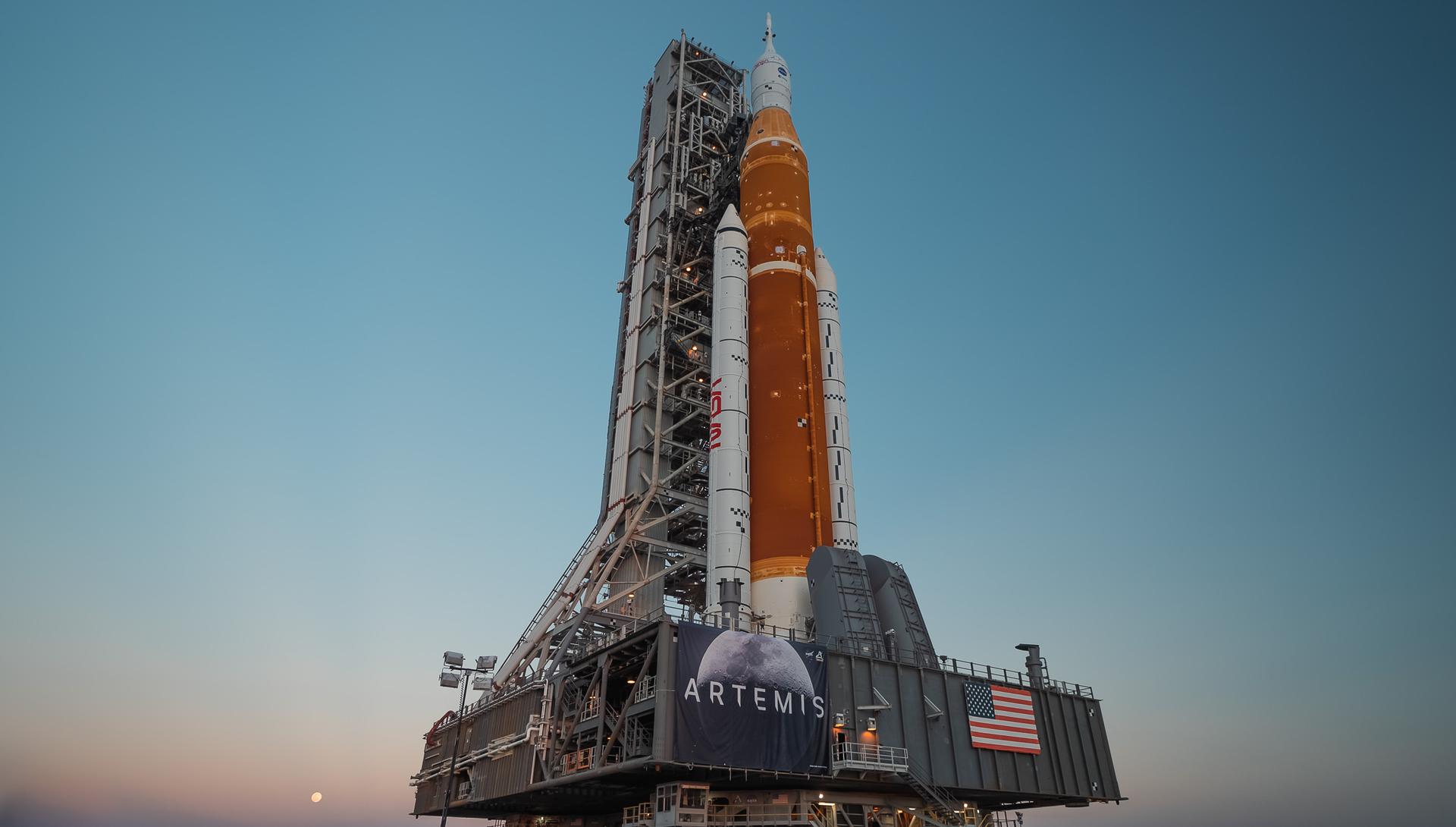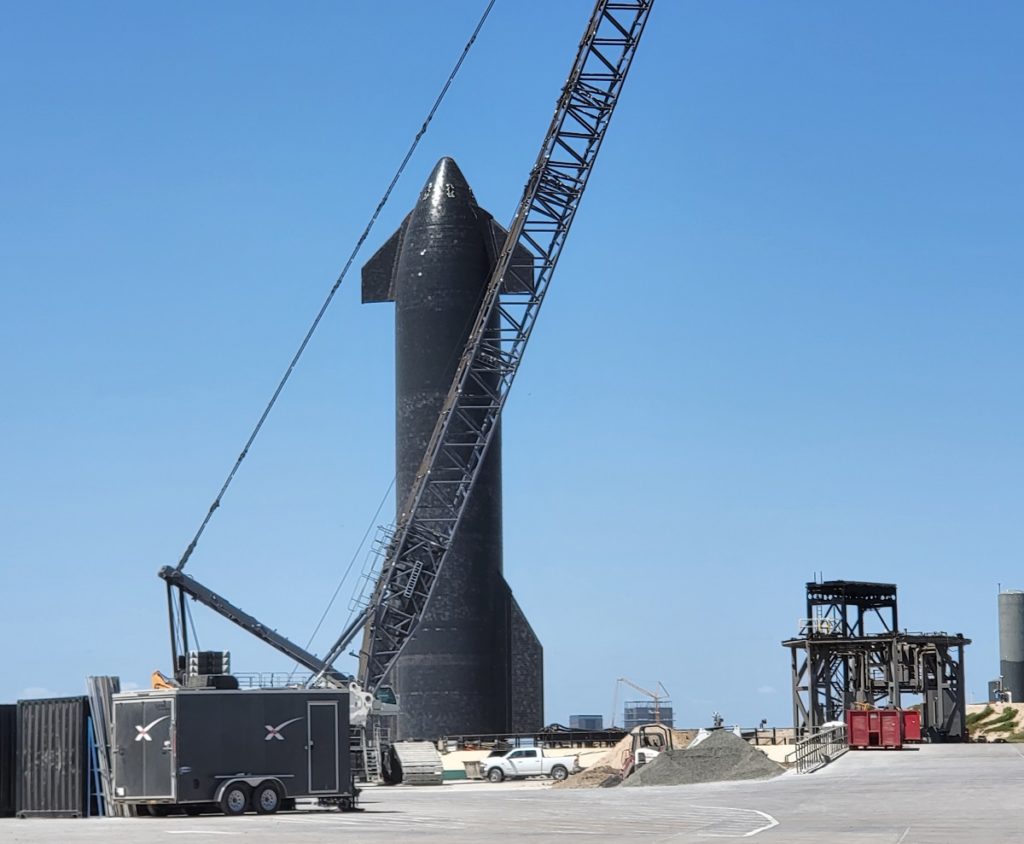
Meteorologists with the U.S. Space Force and the 45th Weather Squadron have updated their forecast for Monday to show that weather conditions should be good to launch the Space Launch Systems (SLS) rocket for its first flight to the Moon. With just a 30% chance that weather will violate weather constraints prescribed for the launch, the latest Launch Mission Execution Forecast shows conditions should be 70% “GO” for launch.
More than 50 years since the final flight of NASA’s Saturn V moon rocket, NASA is getting ready to send SLS on a test mission to the moon on what they refer to as the Artemis I test flight. The massive rocket is due to lift-off from Launch Pad 39B at the Kennedy Space Center at the start of a two-hour launch window which opens at 8:33 am ET on Monday, August 29.
According to the Launch Mission Execution Forecast, “an unsettled weather pattern will continue across Central Florida through Saturday as a weak trough to the north keeps predominant steering flow out of the south-southwest. This will favor stormy afternoons and evenings as the sea breeze collision favors the east coast.” They add, “As usual, showers and storms will decrease the coverage of the showers and thunderstorms along the Space Coast. This flow regime will remain in place for the opening of the initial launch window Monday morning.”

For the launch window, mission meteorologists are most concerned about the presence of cumulus clouds, surface electric fields, and the chance the rocket may need to fly through areas of precipitation. “While the overall lightning threat seems low, this onshore flow regime will promote scattered showers across the Atlantic waters through the launch window,” mission meteorologists concluded.
On May 13, 2019, then-President Donald Trump unveiled a budget to boost NASA spending by $1.6 billion to return the space agency to the Moon. At the time, the President said, “Under my Administration, we are restoring NASA to greatness and we are going back to the Moon, then Mars.” In December of 2017, President Trump issued a directive to NASA to send American astronauts back to the moon and eventually to Mars, shifting the agency’s mission from the study of Earth and a longer-range plan to explore Mars. This marked a significant shift in space policy from the Obama administration, who had cut investment into human space flight to fund more climate change related work.
Current President Joe Biden has embraced President Trump’s space program, continuing the Moon mission on his watch.
The NASA Administrator during President Trump’s administration, Jim Bridenstine, welcomed the budget increase, saying, “This is the boost NASA needs to move forward with putting the next man and the first woman on the Moon. Thank you, President Trump!” Bridenstine added that the $1.6 billion figure serves as a “down payment” to move forward with design, development & exploration with the goal of bringing men and women back to the surface of the moon by 2024. In addition to funding for a human lunar landing system, it also helped fund robotic exploration of the Moon’s polar regions. At that point, Bridenstine revealed that NASA’s renewed efforts to travel to the Moon would be part of the “Artemis” project.

According to Greek mythology, Artemis was the daughter of Leto and Zeus, and the twin of Apollo. She is the goddess of the wilderness, the hunt and wild animals, and fertility; Artemis is also considered as one of the helpers of midwives as a goddess of birth. The original Moon landing project was known as the “Apollo Mission.” Bridenstine says Artemis will bring not only men to the Moon, but women too. “We’re excited to be landing the first woman and next man on the surface of the Moon by 2024,” he said in 2019.
“Imagine the possibility waiting in those big beautiful stars if we dare to dream big. That’s what our country is doing again, we’re dreaming big,” President Trump said when Artemis was unveiled. “This is a giant step toward that inspiring future and toward reclaiming America’s proud destiny in space and space has so much to do with so many other applications including a military application.”
Leveraging technology from the since-discontinued U.S. Space Shuttle Program and a mix of new and existing rocketry, NASA’s SLS rocket is 322 feet tall and weighs about 5.75 million pounds once its loaded with fuel.
The purpose of this Artemis 1 mission is to test out this new SLS rocket; the mission will also send the uncrewed Orion capsule into an orbit around the Moon, eventually returning to Earth.

If this test flight works out well, NASA will send four astronauts on the Artemis 2 mission, which will send them in the Orion capsule for another orbit around the Moon in 2024. With Artemis 2 complete, NASA will then focus on bringing astronauts to the surface of the Moon some time in 2025 or 2026, later than the initial 2024 hoped for when Artemis was first unveiled.
While the SLS rocket is NASA’s most powerful, SpaceX is planning to launch an even larger, more powerful rocket known as Starship. NASA’s Saturn V generated around 7.6 million pounds of thrust at take off and consisted of three stages. The SLS, as currently configured, is a little shorter than the 363 feet – tall Saturn V, and lighter than the Saturn V’s 6.5 million pounds. SpaceX’s Starship is taller than both at 390 feet and will be able to carry more than double what SLS can to space. SpaceX is currently preparing for a suborbital test of Starship which would launch the rocket from Texas towards Hawaii. After that mission, SpaceX would consider additional missions to bring equipment and people to the Moon and to Mars.